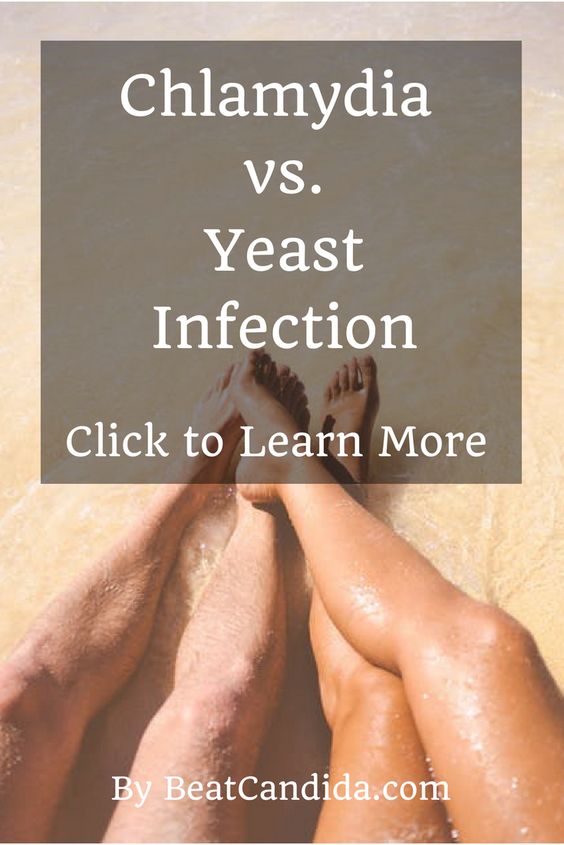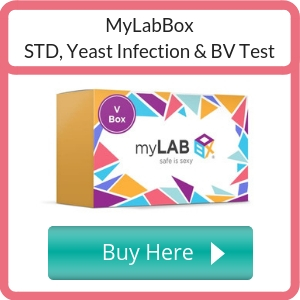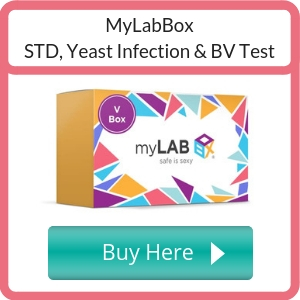Is it Chlamydia or Yeast Infection?
Vaginal symptoms, such as abnormal discharge, itching, and redness are usually a sign of infection. There are many types of vaginal infections, such as bacterial vaginosis, vaginal yeast infection and sexually transmitted diseases.
It’s not always easy to establish what kind of infection you’re suffering from without going to see a doctor. Research shows that about a fifth of women who think they’ve got a yeast infection is actually suffering from a different type of infection.
In this article, I’ll discuss the basic differences between vaginal yeast infection and chlamydia infection. This information is not enough for you to self-diagnose, so I strongly recommend that you see your doctor whenever you notice unpleasant vaginal symptoms to start your treatment as soon as possible.
What is Chlamydia?
Chlamydia is a sexually transmitted disease caused by a bacteria called Chlamydia trachomatis. What’s interesting is that up to 70% of women and 50% of men won’t experience any symptoms of Chlamydia infection. Otherwise, chlamydia symptoms may include:
- abundant vaginal discharge
- pain when urinating and during intercourse
- bleeding after an intercourse
- bleeding between periods or heavy periods
How to Test For Chlamydia?
If you think you may have chlamydia, it’s best to get tested. As most women don’t experience any symptoms, it’s crucial to do a test whenever in doubt. If for any reason you cannot see your doctor, you can order an STD test online.
MyLAB Box will allow you to take a vaginal swab and send it to a laboratory. You’ll receive your lab-certified results within five days along with free medical advice on what to do in case you test positive. Go ahead and order your test kit today.
How to Treat Chlamydia?
Chlamydia is fortunately easy to treat with antibiotics prescribed by your doctor. The most common are:
- a single dose of azithromycin
- one week treatment with doxycycline
Make sure that during your treatment, you should avoid having sex and your sexual partner should get treatment at the same time. It’s very important to start your Chlamydia treatment as soon as possible. If left untreated Chlamydia can cause:
- Pelvic inflammatory disease (PID)
- Cervix Inflammation
- Fallopian tube inflammation
All of these conditions can have a very negative impact on your overall health as well as fertility. Once you know you’ve got Chlamydia, start your treatment promptly and stay healthy!

What is a Vaginal Yeast Infection?
A vaginal yeast infection is caused by a type of yeast called Candida. Candida cells can start multiplying out of control when there are not enough friendly bacteria (probiotics) in your vagina.
Friendly bacteria produce lactic acid which helps maintain a vaginal pH that makes it difficult for Candida to thrive. Once the pH is disturbed, yeast and harmful bacteria have perfect conditions to multiply and feed causing unpleasant symptoms, such as:
- Itchy, swollen, reddened vagina
- Discomfort and pain during intercourse
- A burning sensation while urinating
- Your vaginal discharge may be transparent and watery or thick and white, like cottage cheese with a yeasty smell
- In severe cases, you may notice cracks on the skin around your vulva
How to Test For a Vaginal Yeast Infection?
The above symptoms can be easily confused with bacterial vaginosis or chlamydia, so to make sure it’s actually a yeast infection, you should do a vaginal health test. The most reliable test to buy online is MyLabBox Vaginal Health test.
When you place your order, they’ll send you a test kit, so you can take the swabs from the comfort of your home and send it back in an attached prepaid envelope.
Your lab-certified results will arrive by email within 48 hours. If you test positive, MyLabBox offers a free medical consultation to help you start your treatment swiftly.
How to Cure a Vaginal Yeast Infection?
You can treat a vaginal yeast infection using prescription, over the counter or natural remedies. The most popular OTC medication is Monistat. Monistat contains Miconazole, an antifungal agent very effective against Candida albicans strain (responsible for the majority of vaginal yeast infections).
There are different Monistat treatments available, you choose from 1, 3 and 7-day treatments. According to user reviews, Monistat 7 is the most effective and produces a lasting effect. You can read my full review of Monistat here.
Monistat 7 contains seven applicatorfuls of Miconazole cream. Insert one applicator into your vagina before going to bed for seven consecutive nights. You may see your symptoms disappear within two days, but be sure to continue your treatment for the whole week.
Some Candida cells may still survive, and although they don’t give any symptoms, they’ll start multiplying again once you stop treatment. That’s why it’s important to follow the treatment until the end.
You Can Also Try a 100% Natural Treatment
Another excellent option, especially for women who suffer from chronic yeast infections or infections caused by Candida strains immune to convention treatment are boric acid suppositories.
Boric acid is one of the most effective and safe options when it comes to vaginal yeast infection treatment. BoriCap is one of the best options because they offer same-day shipment which allows you to start your treatment promptly.
BoriCap comes with 28 100% natural suppositories. Insert one suppository into your vagina for 7 consecutive days at bedtime. If you suffer from chronic yeast infections, keep inserting one suppository a week for up to six months to prevent a recurrence.
If you want to learn more, check my article about using boric acid suppositories for a vaginal yeast infection.
If you prefer to treat your vaginal yeast infection with home remedies, check my coconut oil suppository recipes. The ingredients I use include coconut oil, tea tree oil, and aloe vera gel, all of them scientifically shown to kill Candida cells and relieve vaginal yeast infection symptoms.
Conclusion
Vaginal symptoms should always be a cause for concern. It’s really important to find the cause as soon as possible and start treatment because some vaginal infections can have a devastating effect on your health in the long run.
The best thing you can do is to go to see your doctor and get checked and properly diagnosed. If you cannot see your doctor:
If you’ve got any questions or comments, or you’d like to share your experiences with us, we’d love to hear from you! Please use the comment section below.






Chlamydia test is ordered to check successful diagnosis and treatment for bacteria Chlamydia trachomatis. Chlamydia is one of the common STD and can lead to severe problems. Testing for Chlamydia trachomatis and Neisseria gonorrhea (gonorrhea) is done at the same time because the infections caused by these two got almost same symptoms. Proper diagnosis is important as both infections need different treatment. There is no specific symptom of the disease so regular check-ups are required.
That’s true, thank you for your comment!